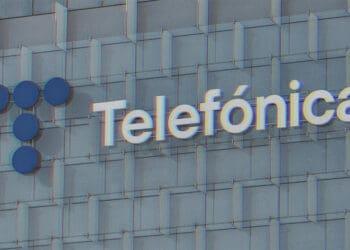On a long enough timeline, every system needs reworking to avoid failure. Gary Patterson and Robert Barker share how even the most steadfast brands can experience serious hiccups if they focus on the wrong thing.
Every board of directors should include an independent review of corporate culture as part of its enterprise risk management process. As the story below notes, The Coca-Cola Company weathered the financial and reputational losses from the introduction of New Coke. But not all companies are so lucky. Understanding the importance of your culture is half the battle.
In hindsight, after every failure, the biggest risk was culture. Culture can not only impede success and growth, but also lead to blind spots that cause the magnitude and kinds of failures that get documented.
But what does “corporate culture” mean? It might mean such divergent focus points as customer relations, frugality or intellectual curiosity. These cultural imperatives lead to different types of companies. Some may not lead to success for all business models.
The Disaster of “New Coke”
For example, in 1985, Coca-Cola famously introduced “New Coke” – it was derived from a careful focus on efficiency and slavish devotion to the taste studies, which showed Coca-Cola losing to competitors. A world-class disaster. But was Coke wrong to focus on taste tests? Was it wrong to focus on production cost savings? Was it wrong to gin up its world-famous marketing culture behind a new product?
In retrospect only, Coke had lost focus on the importance of the history of its brand, the fact that a Coke represented a known quality throughout the world and its relationship of trust with its consumer. In further retrospect, Coke, by focusing on tweaking for cost or marketing efficiencies, was late to the game in the next two decades in rolling out new products that met consumer demands for health and variety.
The base cost of the loss from New Coke has been estimated at $34 million or more. But the real cost to the world’s most famous brand might have been in the billions, at least in the short term. And the reputational costs were probably greater. Could your company sustain a comparable loss?
A focus on one type of culture does not mean ignoring cost savings, or Six Sigma or brand dominance. But a blind focus on the newest fad may undermine the culture your company should embody – or that it represents to its customers or its employees. What does it mean today that Google is being charged with evil surveillance, when its motto was formerly “Do No Evil?” How does it recover its brand with its employees?
Often simple common sense strategically applied can add or preserve meaningful value. This test takes just two minutes and may give you some food for thought.
A “Common Sense” Test
Answer truthfully how well your organization’s people can consistently and quickly answer these three questions. Use a scale of 1 to 10, where 1 is “we might be embarrassed to see the results” and 10 is “we are consistent with an understandable cultural focus aligned with our business strategies.”
Jot down your numerical ranking for each of these three statements:
- We have identified the core attributes of our corporate culture.
Your score is _____.
- We promote our core attributes with integrity and consistently.
Your score is _____.
- We understand and control the risks of over-promoting our corporate culture.
Your score is _____.
Now, add those three scores for you total of _____.
Your confidential, self-scored evaluation by score range follows:
Between 26 and 30 points – Relax a little (not a lot). Even consider bragging a little; you can feel confident you are promoting a consistent corporate culture that is working for you.
Between 20 and 25 – Pretty good. If a mediocre grade satisfied you in college, your situation and risk level might be good enough, and you might be able to weather a loss.
Between 16 and 19 – Flashing yellow. You might want to review the D&O policy again and get more periodic updates from both the internal audit and risk management departments.
Under 16 – Schedule a strategy session. Rethink your mission statement. Discuss what it would take to move to a better category. And while you are doing this, take a look at and re-evaluate the major risks that could be extremely damaging to your organization if they were to occur. The likelihood of a million-dollar blind spot occurring is probably higher than you think.
The directors and executive leadership at the more-than-somewhat embarrassed NYSE company mentioned earlier normally do not like to remember New Coke. The good news is, they remain an iconic brand, because they had financial, operational and leadership bench strengths to survive the losses – and a historic tradition that valued inputs from the consumer. The company survived and prospered by revitalizing its cultural focus. Would you be so fortunate?
A more effective evaluation of your culture and consideration of how to improve it will reduce risk and improve your risk assessment and management process to provide that invaluable time needed to address turbulence when your material risk occurs. Over a long enough time frame, any system will need reworking to avoid failure.
In a day when boards are doing too much and being asked to be specialists in areas where they cannot be, do not forget the fundamental basics of how well your culture reflects the mission statement and focus.
Perhaps it’s time you incorporated the above test into your next self-reflective meeting with management.



 Gary W. Patterson, president & CEO of
Gary W. Patterson, president & CEO of  Robert Barker is an attorney living in Atlanta who has practiced in domestic and international M&A, securities and exchange issues. He has served as in-house counsel and outside counsel to corporations for more than 25 years, including advising boards and management teams. Bob can be reached at +01-678-576-3992 or
Robert Barker is an attorney living in Atlanta who has practiced in domestic and international M&A, securities and exchange issues. He has served as in-house counsel and outside counsel to corporations for more than 25 years, including advising boards and management teams. Bob can be reached at +01-678-576-3992 or 










